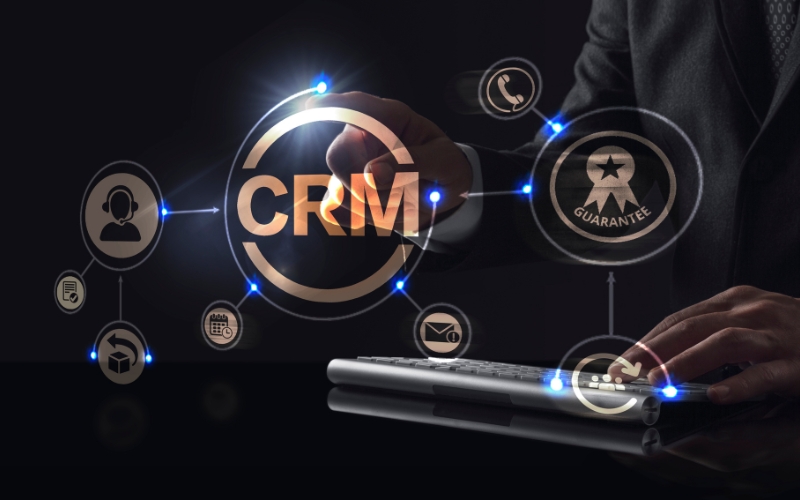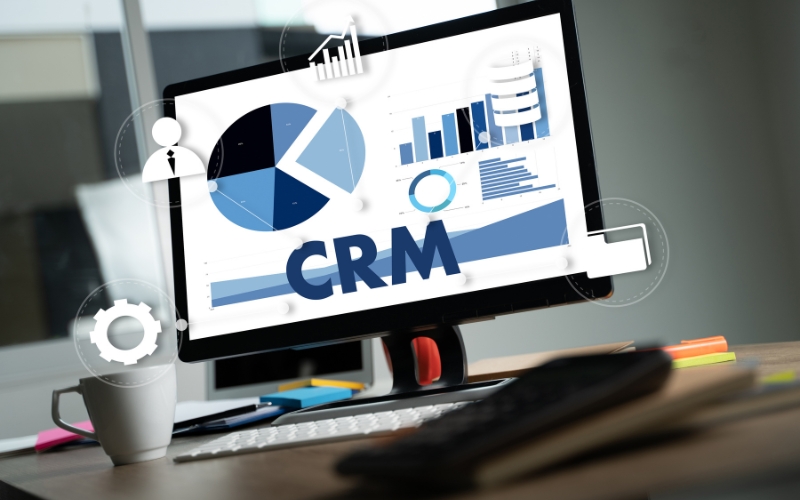
In today’s highly competitive market, customer retention is essential for long-term business success. One of the most effective tools available to companies aiming to improve customer retention is CRM tools. These tools are designed to help businesses manage customer interactions and streamline communication, offering valuable insights that enhance loyalty and satisfaction. By leveraging CRM tools, companies can better understand their customers’ needs, foster personalized experiences, and implement strategies that keep customers engaged over time.
Understanding the Role of CRM Tools in Customer Retention

In today’s competitive business landscape, customer retention has become a top priority for companies looking to maintain a strong customer base and drive long-term growth. One of the most effective ways to improve customer retention is by using CRM tools, which play a crucial role in managing customer relationships and enhancing loyalty.
Customer Relationship Management (CRM) tools are software platforms designed to help businesses track, manage, and analyze customer interactions and data throughout the customer lifecycle. By consolidating customer information into a single platform, CRM tools allow businesses to gain a deeper understanding of their customers’ preferences, behaviors, and needs. This information is invaluable when it comes to crafting strategies that promote customer satisfaction and retention.
The primary role of CRM tools in customer retention lies in their ability to create personalized experiences. With detailed data on customer interactions, businesses can tailor their communications, offers, and services to meet individual preferences. For example, CRM tools allow businesses to segment customers based on various factors, such as purchase history, location, and engagement level. This segmentation enables companies to send targeted marketing messages or personalized follow-up communications, increasing the likelihood of retaining customers.
Moreover, CRM tools help businesses track and manage the customer journey more effectively. From the first point of contact to post-purchase support, CRM systems enable seamless interactions at every stage. This consistency is critical in building strong, lasting relationships with customers. A business that is able to stay in constant communication with its customers, address concerns in real-time, and offer relevant solutions is much more likely to foster loyalty and improve retention rates.
In addition to personalized communication, CRM tools provide businesses with valuable insights into customer behavior. By analyzing patterns, such as purchase frequency or support interactions, businesses can identify at-risk customers before they churn. With this information, companies can implement targeted retention strategies, such as offering discounts or reaching out with personalized support, to keep customers engaged.
Overall, CRM tools play a pivotal role in not only managing customer relationships but also in enhancing customer retention. By offering personalized experiences, improving communication, and providing valuable insights, businesses can keep their customers satisfied, loyal, and less likely to turn to competitors.
Personalizing Customer Interactions Through CRM

Personalization has become a key factor in driving customer loyalty and satisfaction, and CRM tools are essential in helping businesses achieve this. With the wealth of data that modern businesses accumulate from their customers, the ability to personalize interactions has never been easier or more impactful. CRM tools empower businesses to gather, analyze, and utilize customer data to deliver experiences tailored to individual needs, fostering deeper connections and improving retention.
One of the primary ways CRM tools facilitate personalization is by centralizing customer data. These tools collect and store information from various touchpoints—such as email interactions, purchase history, social media activity, and customer support inquiries—into a single, unified database. This enables businesses to gain a comprehensive view of each customer, including their preferences, habits, and behaviors. By having access to such detailed customer profiles, businesses can craft more targeted and relevant communications, whether it’s an email, a recommendation, or a personalized offer.
For instance, CRM tools allow businesses to segment their customers based on various criteria such as demographics, purchase frequency, or product preferences. This segmentation enables businesses to send tailored messages that resonate with specific customer groups. For example, a business could use CRM data to identify customers who have shown interest in a particular product category and send them exclusive offers or updates related to that category, making the customer feel valued and understood.
Additionally, CRM tools help automate personalized interactions at scale. With the ability to set up automated workflows, businesses can send personalized emails or follow-up messages at the right time without manual intervention. For example, if a customer abandons their cart, the CRM system can automatically send a reminder email with a personalized message, encouraging the customer to complete their purchase. These types of personalized touchpoints increase the likelihood of conversion and enhance customer satisfaction.
Furthermore, CRM tools provide insights into customer satisfaction and potential issues, enabling businesses to proactively address concerns. By tracking customer feedback and support tickets, businesses can anticipate needs and offer personalized solutions before problems escalate, further enhancing loyalty.
Using CRM Analytics to Identify At-Risk Customers

In the competitive business world, retaining customers is often more cost-effective than acquiring new ones. One of the most effective ways to prevent churn and improve customer retention is by using CRM tools to identify at-risk customers before they decide to leave. CRM tools provide valuable analytics and insights that can help businesses monitor customer behavior and detect early signs of disengagement, enabling proactive strategies to keep customers loyal.
CRM analytics plays a crucial role in recognizing patterns that indicate potential churn risks. CRM tools can track various customer interactions, such as purchase frequency, support inquiries, and engagement levels with marketing campaigns. By analyzing this data, businesses can identify when a customer’s behavior starts to change, which may signal that they are no longer as satisfied or engaged as before. For example, a customer who previously made frequent purchases but suddenly becomes inactive may be at risk of churning. By identifying this early on, businesses can take immediate action to re-engage the customer before they abandon the brand.
Moreover, CRM tools help businesses segment customers based on their likelihood to churn, allowing for targeted interventions. With predictive analytics, businesses can use historical data to identify customers who share similar characteristics with those who have previously churned. These insights enable companies to craft specific retention strategies tailored to each group’s needs. For instance, a customer who has shown reduced interaction might receive a personalized offer or a follow-up email to address any concerns they may have.
Another powerful feature of CRM tools is their ability to track customer satisfaction through surveys, feedback, and support tickets. If a customer expresses dissatisfaction with a product or service, CRM tools can flag this and prompt the business to reach out proactively. Whether it’s offering a discount, resolving an issue, or simply providing additional support, addressing concerns promptly can often turn a potentially lost customer into a loyal one.
By leveraging the predictive power of CRM tools, businesses can gain actionable insights that help them identify at-risk customers early. This allows them to implement proactive retention strategies—such as personalized offers, targeted communications, or tailored solutions—designed to re-engage these customers and keep them from churning. Ultimately, CRM tools enable businesses to safeguard their customer base and increase overall retention rates.
Automating Follow-ups and Reminders to Stay Engaged

One of the most powerful features of CRM tools is their ability to automate follow-ups and reminders, ensuring that businesses stay engaged with their customers at the most critical moments. In today’s fast-paced business environment, timely communication is essential to maintaining strong relationships and boosting customer retention. By using CRM tools to automate these processes, businesses can consistently reach out to customers without manual intervention, ensuring that no important touchpoint is missed.
Automated workflows within CRM tools help streamline the follow-up process, allowing businesses to set up triggers based on specific customer actions or milestones. For example, after a customer makes a purchase, CRM tools can automatically send a thank-you email or an order confirmation message. A few days later, the system can trigger a follow-up email asking for feedback or offering related products. This level of automation ensures that the customer is consistently engaged throughout their journey, increasing the likelihood of repeat purchases and long-term loyalty.
Additionally, CRM tools can be programmed to send reminders for important customer actions. If a customer has not interacted with a brand for a certain period, the system can automatically send a re-engagement email or offer a personalized discount to encourage them to return. Similarly, CRM tools can remind sales representatives to follow up with leads or inactive customers at specific intervals, helping them stay organized and ensuring that no potential opportunity is overlooked.
These automated reminders also play a crucial role in improving customer satisfaction. For instance, if a customer has a scheduled appointment or product delivery, CRM tools can send automated reminders to both the business and the customer, reducing the chances of missed appointments and ensuring smooth service delivery. By staying on top of these interactions, businesses show their customers that they value their time and commitment, which fosters trust and long-term engagement.
Moreover, automated follow-ups help businesses maintain consistency in their communication. Rather than relying on employees to remember and manage individual customer interactions, CRM tools ensure that messages are sent at the optimal time, based on predefined rules. This consistent and timely engagement strengthens the relationship between the business and the customer, ultimately leading to improved retention rates.
Measuring the Success of CRM-Driven Retention Strategies

Measuring the success of retention strategies is critical for businesses aiming to understand the effectiveness of their efforts and continuously improve customer loyalty. CRM tools play a vital role in this process by providing businesses with detailed metrics and key performance indicators (KPIs) that help evaluate the success of CRM-driven retention strategies. By leveraging these insights, companies can fine-tune their approach to ensure that they are engaging their customers effectively and achieving optimal retention rates.
One of the primary ways CRM tools help measure retention success is by tracking customer lifetime value (CLV). CLV is a critical metric that indicates how much a customer is expected to contribute to a business over their entire relationship. CRM tools enable businesses to calculate CLV by analyzing past purchase behavior, frequency of engagement, and other relevant data points. By monitoring CLV, businesses can assess whether their retention strategies are increasing the value of their existing customers over time.
Another key KPI tracked by CRM tools is customer retention rate. This metric provides an overview of how well a company retains customers over a specified period. By comparing this rate to previous periods, businesses can identify trends in customer loyalty and the effectiveness of their retention tactics. CRM tools make it easier to track this rate by automating the process of monitoring customer retention across different segments, ensuring accurate and real-time reporting.
Additionally, CRM tools offer insights into customer satisfaction through surveys, feedback, and customer support tickets. By analyzing customer satisfaction scores and monitoring sentiment, businesses can gauge the overall impact of their retention strategies. If customers are expressing positive feedback and engaging with the brand on a deeper level, it indicates that retention efforts are successful. Conversely, a rise in negative feedback may signal areas that need improvement.
Another important metric provided by CRM tools is the churn rate, which measures the percentage of customers who stop doing business with a company over a given period. Tracking churn rates through CRM systems enables businesses to pinpoint potential issues in their retention strategies and take corrective actions. By understanding the factors that contribute to customer attrition, businesses can refine their CRM-driven retention efforts and better meet customer expectations.
Conclusion:
To learn more about how to optimize your CRM strategy and enhance customer retention, check out this insightful guide on CRM Best Practices for 2024 from HubSpot. This resource offers actionable tips on leveraging CRM tools effectively, improving customer relationships, and maximizing business growth through smarter CRM utilization.
In conclusion, CRM tools play a pivotal role in customer retention by enabling businesses to manage relationships effectively, personalize interactions, and gain valuable insights. With features like automation, predictive analytics, and performance measurement, these tools empower companies to stay connected with customers, identify potential issues, and take proactive actions to maintain loyalty. By harnessing the power of CRM tools, businesses can significantly enhance their customer retention strategies, ensuring lasting relationships and continued success.
For more details or to discuss your specific requirements, visit our AI Scope Digital page.

